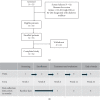Efficacy and Safety of Tracnil™ Administration in Patients with Dermatological Manifestations of PCOS: An Open-Label Single-Arm Study
- PMID: 32256563
- PMCID: PMC7128037
- DOI: 10.1155/2020/7019126
Efficacy and Safety of Tracnil™ Administration in Patients with Dermatological Manifestations of PCOS: An Open-Label Single-Arm Study
Abstract
Myo-inositol's role in improving acne by reducing hyperandrogenism has been demonstrated in PCOS patients. Inositol and associated molecules display inhibitory properties against 5-α reductase, COX-2, and lipase enzymes in addition to their antimicrobial and anti-inflammatory properties. However, the role of myo-inositol is not well established in women patients with normal hormone levels but with clinical manifestations of PCOS. In this study, we evaluate the efficacy of Tracnil™, a combination of myo-inositol with folic acid and vitamin D3, in resolving acne in overweight women of menstruation age displaying normal hormone levels. It is a single-arm study conducted at 2 centers including 33 women with acne, hirsutism, and menstrual irregularities. Acne and hirsutism were assessed by manual lesion count, modified Cook's scale, and modified Ferriman-Gallwey hirsutism score (mFGHS). Hormone levels and safety parameters were assessed throughout the study. Our results show that Tracnil™ monotherapy could drastically reduce acne-related lesions of both inflammatory and noninflammatory types as quickly as 8 weeks. Additionally, it improves hirsutism and menstrual irregularities. Adverse reactions were negligible during the whole study period with no drastic side effects reflected by a modulatory effect on hormone levels. Despite the subjects having normal hormone levels, the acne treatment with myo-inositol and vitamin D3 shows improvement in hirsutism and regularization of menstrual cycle. Therefore, we attribute the mechanism of action of Tracnil™ to modulation of receptor sensitivity to sex hormones or other downstream processing events. Tracnil™ may be considered as a first-line treatment for dermatological manifestations of PCOS even in the absence of significant hormonal abnormalities. This treatment is practically implementable in a dermatologists's office practise.
Copyright © 2020 Ezhil Arasan Ramanan et al.
Conflict of interest statement
Dr. Ezhil Arasan is a freelancer medical advisor for various pharma companies and was involved in the study design and planning. Dr. Sailatha Ravi is a freelancer involved in data analysis, manuscript preparation, and editing. Dr. Anbu and Dr. Margaret are independent dermatologists, who conducted the trials in accordance with ethical committee norms.
Figures








Similar articles
-
Polycystic ovary syndrome (PCOS) and hyperandrogenism: the role of a new natural association.Minerva Ginecol. 2015 Oct;67(5):457-63. Minerva Ginecol. 2015. PMID: 26491824 Clinical Trial.
-
Association of Myo-Inositol and Microlipodispersed Magnesium in Androgen-Dependent Dermatological Diseases: A Retrospective Study.Pharmaceuticals (Basel). 2025 Feb 13;18(2):251. doi: 10.3390/ph18020251. Pharmaceuticals (Basel). 2025. PMID: 40006064 Free PMC article.
-
Efficacy of myo-inositol in the treatment of cutaneous disorders in young women with polycystic ovary syndrome.Gynecol Endocrinol. 2009 Aug;25(8):508-13. doi: 10.1080/09513590903015544. Gynecol Endocrinol. 2009. PMID: 19551544
-
Therapeutic approach for metabolic disorders and infertility in women with PCOS.Gynecol Endocrinol. 2018 Jan;34(1):4-9. doi: 10.1080/09513590.2017.1370644. Epub 2017 Aug 29. Gynecol Endocrinol. 2018. PMID: 28850273 Review.
-
Management of women with PCOS using myo-inositol and folic acid. New clinical data and review of the literature.Horm Mol Biol Clin Investig. 2018 Mar 2;34(2):/j/hmbci.2018.34.issue-2/hmbci-2017-0067/hmbci-2017-0067.xml. doi: 10.1515/hmbci-2017-0067. Horm Mol Biol Clin Investig. 2018. PMID: 29498933 Review.
Cited by
-
New Perspectives on Nutraceutical Insulin Sensitizing Agents in the Treatment of Psoriasis and Other Dermatological Diseases.Int J Mol Sci. 2025 Aug 4;26(15):7538. doi: 10.3390/ijms26157538. Int J Mol Sci. 2025. PMID: 40806666 Free PMC article. Review.
-
Management of polycystic ovary syndrome among Indian women using myo-inositol and D-chiro-inositol.Bioinformation. 2022 Feb 28;18(2):103-110. doi: 10.6026/97320630018103. eCollection 2022. Bioinformation. 2022. PMID: 36420435 Free PMC article.
References
LinkOut - more resources
Full Text Sources
Research Materials

